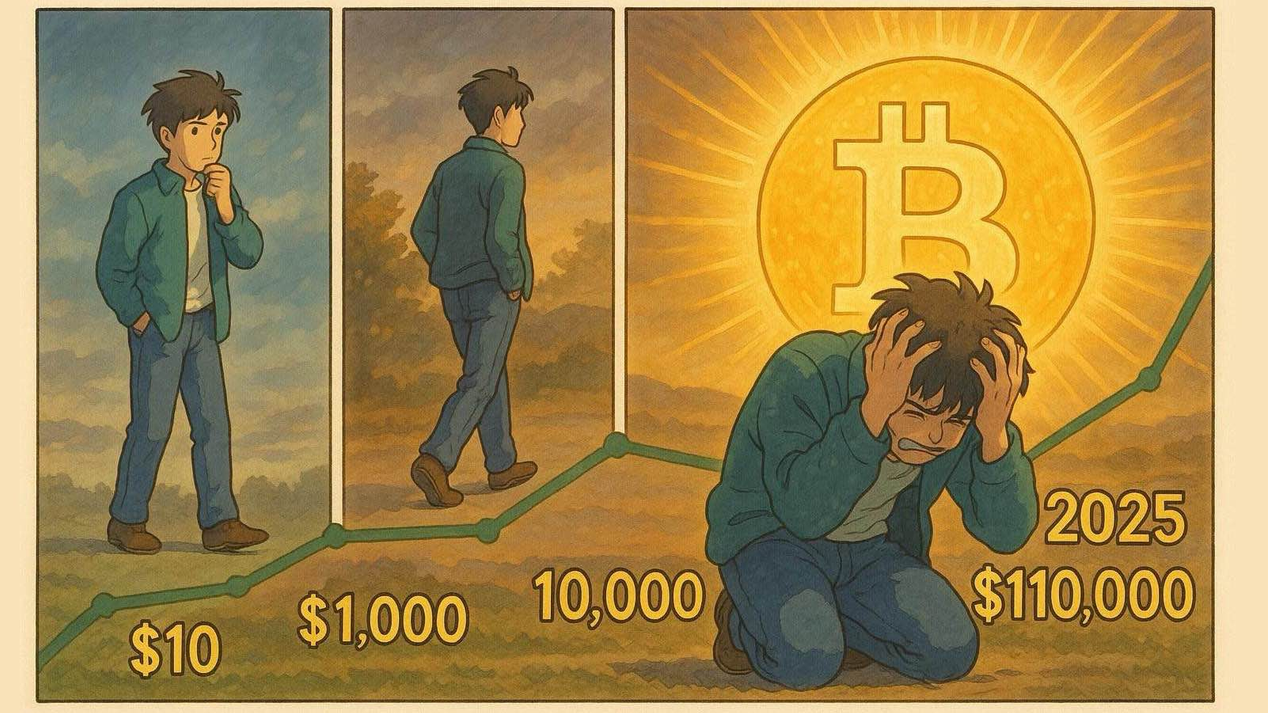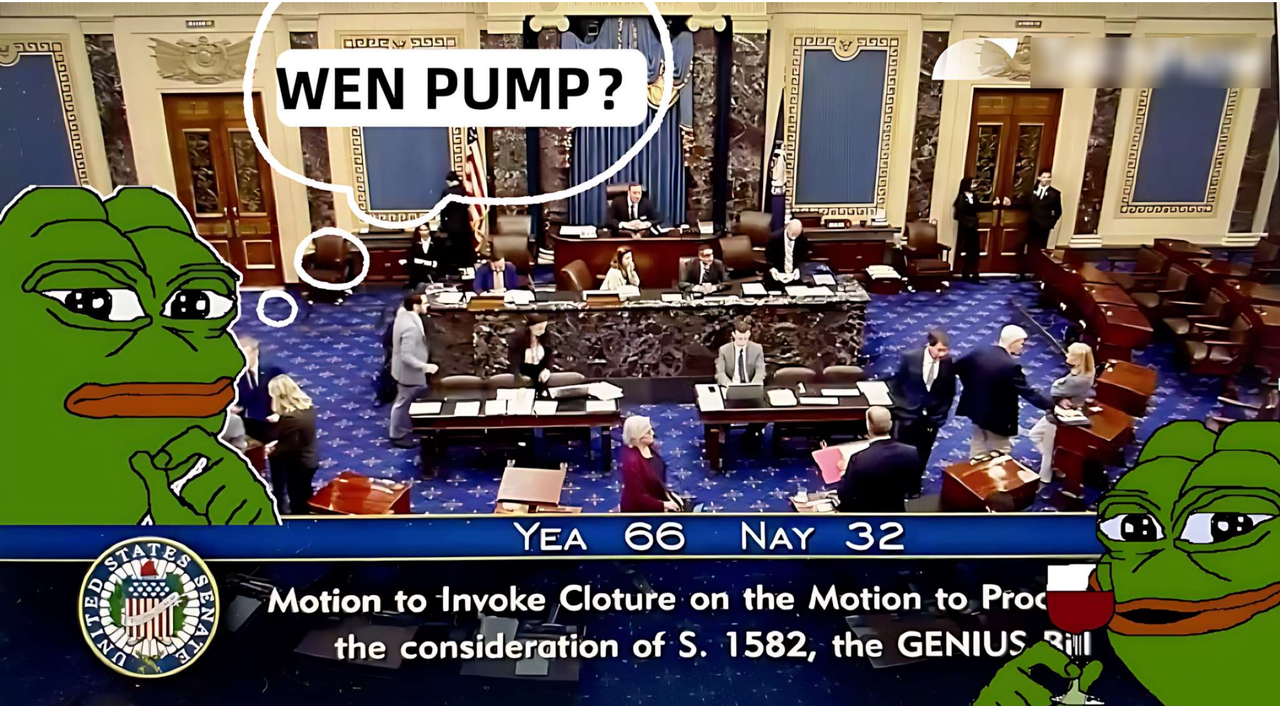From Meme Coin to CSGO Skin: Speculation Never Sleeps
 2025-05-26 10:57
2025-05-26 10:57
You may not have played CS: GO, but you must have a friend who has made some money from it. Of course, it may have been a loss recently.
When the popularity of Meme coins gradually subsided, some speculators who had been fluctuating in the ups and downs of Meme coins turned their attention to CS skins and discussed the K-line chart of CS: GO accessories in various coin trading groups. The former "Meme hunter in the coin circle" has transformed into a "jewelry dog", and CS: GO skins have become the next wealth password in their eyes.
CS: GO (Counter-Strike: Global Offensive) was officially released on August 21, 2012. In 2013, the weapon box and skin system were introduced and allowed to be traded on the Steam market, laying the foundation for the CS: GO accessory economy. After free attempts and multiple updates, the accessory market has flourished for twelve years.
In May 2025, the CS accessory market suddenly collapsed, with the accessory index plummeting by 20% in three days. The prices of several popular trading varieties were nearly halved, sparking discussions among users on various platforms. This sense of market collapse is familiar to cryptocurrency traders, but this time everyone is holding a "virtual gun skin".

Players who have been steadily happy because of the appreciation of their skins overnight "won't be happy anymore". The speculative market is fragile. How did these skins, which resemble NFTs and fall as fiercely as Meme coins, attract their followers and what will they bring?
Making money is a handy thing
In April 2025, the Meme coin market was lukewarm, while the CS: GO accessory market was booming, attracting the attention of many cryptocurrency players.
Everything starts with the update of Arms Deal in 2013. Skins (also known as "accessories", which are essentially graphic overlays that can modify the appearance of weapons in CS) were launched at that time and can only be obtained in the game in the form of random drops.
This ushered in the era of "opening the box and winning the lottery" wealth game. In order to obtain rare skins that cannot be opened, players gradually began to trade spontaneously. The rise of skin trading websites further promoted the prosperity of the market, giving rise to an all-encompassing prosperous ecosystem - players, trading platforms, hosts, "down dogs", black markets, data tools, etc.

Even derived historical price K-line charts
Source: CSGO STOCKS
However, for those who experience ups and downs in the CS: GO skin market, most of them just started out to play.In 2019, Mantou was still in college. At first, games were just games. According to him, "after playing for a while, you want to buy skins," which is a normal thing for players.
For CS: GO players, skins are not just a decoration, but more like a social currency. High-quality or rare skins highlight the player's status in the community and satisfy their vanity. This naturally creates a demand for jewelry circulation, which also breeds a corresponding market.
After gaining a better understanding of this market, Mantou saw the sharp increase in skin prices. Coupled with the fact that he was just a college student with little money at the time, he had the urge to "speculate on skin".His first pot of gold was not large - "I earned a few hundred yuan at the beginning and was happy for a few days."
Compared to making money solely through skins, for Mantou, buying skins and playing games in the game are more like complementary things. He hasn't thought too much about trading strategies, "it's all about wanting to play and then buying to play", but the fluctuations in the accessory market will also make him return to CS: GO. For example, in April of this year, he returned to the game because he heard that "accessories are very exciting".
In fact, CS: GO and the accessory economy it has created are indeed complementary.Well-known KOL Hua Jiao once spontaneously researched the market economy created by this game out of curiosity. In his opinion, the lasting wealth effect of the CS: GO accessory market is inseparable from the attributes of the game itself.
As a gunfight game, the CS: GO game mode is very simple and has not changed much compared to when it was first developed. In addition, Valve (the developer of CS: GO games) often uses activities to stimulate players, which can attract old players to quickly return due to nostalgia or other factors.
While being able to quickly attract or retain old players, the promotion of E-sports host also lowers the threshold, attracting a continuous stream of "new generation forces" (mostly college students) to enter the market, forming the increment of this market.
Vanity prompts players to trade skins and accessories, attracting a steady stream of new and old players to take the bait. Making money while playing has become the best footnote to CS: GO games and accessory economy.
Let the price of jewelry soar
The price range of CS: GO accessories in the market is astonishing, ranging from ordinary skins worth a few yuan to rare treasures worth tens of thousands or even hundreds of thousands, forming a unique ecosystem. It's like the currency hierarchy in the currency circle - ordinary skins are like "air coins", while top accessories such as Dragon Sniper and Butterfly Knife are comparable to BAYC and CryptoPunks in the NFT world, and their prices continue to break records due to scarcity and consensus premium.
A large number of common weapon cases and ordinary quality skins are located at the bottom of the price spectrum. For example, the "Snakebite Case" weapon case may only sell for about 0.36 US dollars (about 2.5 yuan). These accessories are relatively easy to obtain and have a large supply, so the price is affordable and meets the personalized needs of most players.
Entering the middle price range, the price of jewelry usually ranges from tens to hundreds of yuan. Jewelry in this range often has better appearance design, a certain rarity, or serves more popular weapons.

Source: CSmoney
In the high-end market, prices have increased exponentially, with accessories costing thousands or even tens of thousands of RMB being common. These are usually extremely rare knives, gloves, and top-level gun skins with legendary or extremely rare colors. A brand new "M4A4 | Howl" that can record kills and comes with rare stickers is recommended for $18,324 (about 130,000 RMB) on second-hand platforms.

Source: ShadowPay website article
These high-priced accessories have gone beyond the Game Prop itself and are seen as collectibles and investments. Overall, factors such as the appearance, wear and tear, rarity, style, operation of accessory merchants ("down dogs"), student holidays, new product drops, and even host effects all affect their market prices. Platforms such as Steam's market and third-party trading websites have also played an important role in shaping the CS: GO skin market.
Even if the influencing factors can be rationally sorted out, the arbitrary price of jewelry is still unexpected. This kind of arbitrariness is common in the CS: GO jewelry market and the cryptocurrency circle.
When CS: GO announced its upcoming upgrade to CS2 in 2023, many high-priced skins and rare stickers experienced price increases. However, just a few months later, CS2 was officially launched, and many skins experienced significant price drops due to changes in display effects or adjustments to drop mechanisms. Many players who bought at high prices were "trapped". Similarly, the $TRUMP coin launched by Trump before taking office was once popular, but its price collapsed instantly after taking office, leaving a mess.
However, the price changes and transactions of jewelry seem random and free like Meme, but in fact, they are all under the control of V company. The entire economic ecology surrounding jewelry must be adjusted according to the rules of the studio, and V company occupies an absolute initiative in it.
Hua Jiao said, "It (V company) regulates all the probabilities and the rarity of each skin that pops up, and can tell you where to go." Even the display effect of skins in the game will change due to game updates. "Why does CS2 have such a big impact on prices? Because V company has changed the display of some skins in the game, some look better, some look uglier," Mantou said.
The accessories in CS: GO are financial products that can fly, but looking down, the string of this kite has always been held by V company.
At the extreme, there is a risk in the jewelry market that "if V company updates tomorrow, it will not be able to freely trade skins". As Mantou said, "You cannot control the changes in V company's policies, and NFTs are easier to operate in this regard."
The story of the cryptocurrency circle, the reenactment of the jewelry market
The financial attributes and price changes of jewelry have made many people in the crypto circle exclaim, "Isn't this just NFT?" This is not groundless, and even the unintentional effect of "earning while playing" coincides with the "play to earn" pursued by GamFi design.
Although CS: GO accessories can be used in games, this constitutes a difference in practicality from NFTs. Mantou said, "Some expensive ones are indeed good-looking," but in fact, this is only a small part. "Skin has no function, and it doesn't even add three points of attack power." For the vast group of young players, accessories carry more complex psychological needs and social significance. They are a concentrated embodiment of beauty pursuit, face culture, and identity symbol, which is similar to the role played by NFTs in some circles.
Professional jewelry trading websites such as Jbskins.com, when describing a max gold print for the 2022 Antwerp Championship, also pointed out that it is "not just a simple sticker, but also a symbol of identity." "Although it cannot improve your skills, it can definitely enhance your gaming experience and face."

In addition to the symbolic attributes of social status, the two also have similarities in price drivers.
Hua Jiao said that the price of specific accessories on CS: GO will increase due to the celebrity effect used by hosts and esports players, while NFTs are mainly symbols of identity and also need some celebrity effect to carry the price. The celebrity endorsement brought by the purchase of superstars can drive up the floor price of NFTs, causing prices to soar hundreds or even thousands of times in a short period of time. However, once market sentiment changes, liquidity tightens, or negative news about the project itself appears, the price of NFTs may plummet in a short period of time, causing heavy losses to high-level buyers.
What's even more coincidental is that after the collapse of CS: GO accessories, the cryptocurrency and Meme markets quietly rebounded. Ethereum, which has been silent for a long time, rose nearly 40% in 7 days, breaking through $2500. Old coins such as $PEPE, $PNUT, and $moodeng have successively rebounded. Some even speculate that funds flow between different virtual assets, forming an alternative "bloodsucking effect". Although it cannot be directly proven, this coincidence of fund flow has become a topic of discussion in the cryptocurrency community.
Opportunities and risks always go hand in hand. Before May, CS: GO players who had been happy for a period of time ushered in an unprecedented price jump. The 50,000 RMB earned by Mantou from the appreciation of jewelry disappeared overnight and became a loss 70,000. When it comes to his view on this decline, he, who has played in the currency circle for a long time, seems very calm. He believes that compared with the previous decline in trading volume, which was generally not much, the decline is so large and the trading volume is quite good. If the jewelry market can attract more attention and recover slowly, it should be a good thing.
After all, from Meme coins to CS: GO accessories, the story of cyber speculation will never end. The market, emotions, greed, and fear always cycle in different lanes.
The only constant is that financial freedom is always out of reach, and there are always buyers at high positions.
Latest news
-

- See more
Bitcoin breaks through 110,000 dollars, regrets and misses of those years
On May 22, the 14th anniversary of Bitcoin Pizza Day, Bitcoin broke through the ...
 2025-05-26
2025-05-26
-

- See more
Rethinking Bitcoin's Lightning Network Design from a Thunderbolt Perspective
Why can't I buy coffee with bitcoin?When most people think of Bitcoin, the first...
 2025-05-26
2025-05-26

